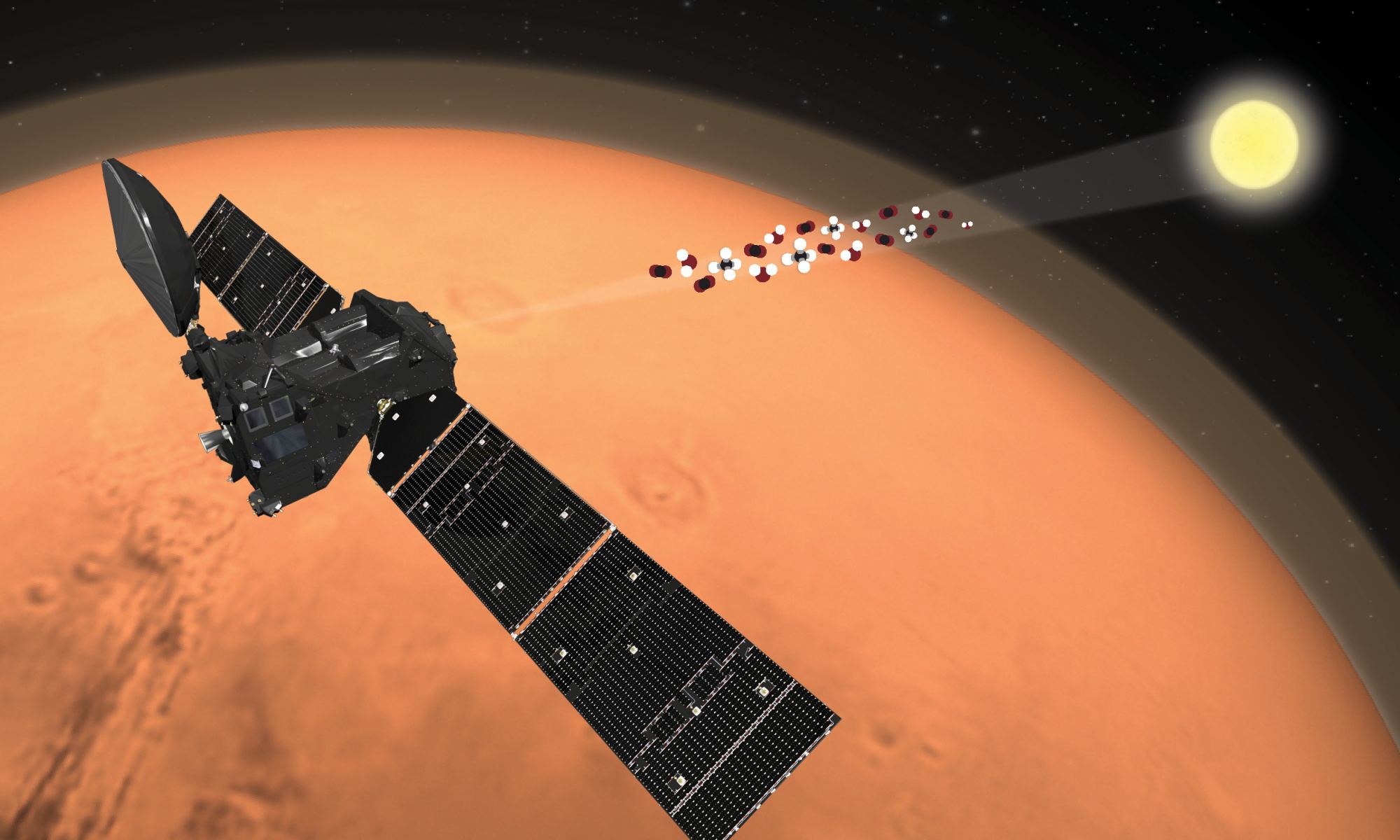At this very moment, eleven robotic missions are exploring Mars, a combination of orbiters, landers, rovers, and one aerial vehicle (the Ingenuity helicopter). Like their predecessors, these missions are studying Mars’ atmosphere, surface, and subsurface to learn more about its past and evolution, including how it went from a once warmer and wetter environment to the freezing, dusty, and extremely dry planet we see today. In addition, these missions are looking for evidence of past life on Mars and perhaps learning if and where it might still exist today.
One particularly interesting issue is how the atmosphere of Mars – primarily composed of carbon dioxide (CO2) – is relatively enriched with Carbon-13 (13C), aka. “heavy carbon.” For years, scientists have speculated that the ratio of this isotope to “light carbon” (12C) might be responsible for organics found on the surface (a sign of biological processes!). But after analyzing data from the ESA’s ExoMars Trace Gas Orbiter (TGO) mission, an international team led by The Open University determined that these organics may be “abiotic” in origin (i.e., not biological).
The study was led by Juan Alday, a postdoctoral researcher with The Open University (OU), and members of its Atmospheric Research and Surface Exploration group. They were joined by the Space Research Institute (IKI), the Laboratoire Atmosphères, Milieux, Observations Spatiales (LATMOS), and the Atmospheric, Oceanic, and Planetary Physics (AOPP) group at the University of Oxford. Their findings were represented in a paper titled “Photochemical depletion of heavy CO isotopes in the Martian atmosphere,” which recently appeared in Nature Astronomy.

Carbon dioxide accounts for about 96% of the atmosphere on Mars, with trace amounts of carbon monoxide (0.0557%). The relative abundance of the heavy carbon isotope in these gases (which accounts for just 1.1% of carbon isotopes in Earth’s atmosphere) has been attributed to the preferential escape of “light carbon” (12C) to space over several billion years. This is based in part on recent measurements by NASA’s Curiosity rover that revealed a depletion of 13C in surface organic material (methane gas).
By analyzing this enrichment, scientists hope to learn more about the atmospheric processes contributing to the evolution of “isotopic ratios” between the upper and lower atmosphere. Since atmospheric CO and organic molecules share the same 13C-depleted isotopic signature, scientists hope to find clues as to whether organic processes (a possible indication of life) may have played a role. For the sake of their study, the team led by Dr. Alday examined CO vertical profiles obtained by the TGO Atmospheric Chemistry Suite (ACS).
This suite consists of three infrared Echelle-spectrometers that gather information in the near-, mid-, and far-infrared (NIR, MIR, TIRVIM) channels. Since 2016, these instruments have gathered spectra from Mars’ atmosphere, using absorption lines that indicate the presence of different chemical elements to determine its composition. The team then combined this data with a photochemical model that predicts the depletion of carbon and oxygen in CO molecules in the atmosphere due to interaction with solar radiation.
Their results indicate (contrary to what was previously thought) that carbon monoxide (CO) in the Martian atmosphere is depleted of heavy carbon instead of light carbon. As Dr. Alday explained in an OU News press release.
“The key [to] understanding why there is less 13C in CO lies in the chemical relationship between CO2 and CO. When CO2 molecules are destroyed by sunlight to form CO, 12CO2 molecules are more efficiently destroyed than 13CO2, leading a depletion of 13C in CO over long periods of time.”

These findings help address the long-standing debate about whether biological or non-biological processes led to the presence of organic material on the surface of Mars. Despite the trace amounts of CO in the atmosphere of Mars, they have important implications for our understanding of how the Martian atmosphere and climate have evolved with time. On the one hand, they could provide insight into past conditions that allowed for flowing and standing bodies of water on the surface.
On the other, it helps refine the search for past life on Mars, even if the findings could be seen as a letdown. The ultimate goal, said Dr. Alday, is to determine if the conditions for life ever existed and if they lasted long enough for life to emerge:
“We do not know what the atmosphere of early Mars was like nor what conditions allowed liquid water to flow on the surface. The isotopes of carbon on Mars’ atmosphere can help us estimate how much CO2 there was in the past. The new measurements by the ExoMars TGO suggest that less CO2 has escaped the planet than previously thought and provide new constraints on the composition of this early atmosphere of Mars.”
This research was made possible thanks to support from the UK Space Agency, which funded the development of the ACS spectrometers and the Atmospheric Research and Surface Exploration groups’ research. The TGO is part of the larger ExoMars program, a collaborative effort between the ESA and Roscosmos. This program will send the Rosalind Franklin rover to Mars in the coming years to further assist in the ongoing search for past (and maybe even present) life on Mars.
Further Reading: Open University News, Nature Astronomy

